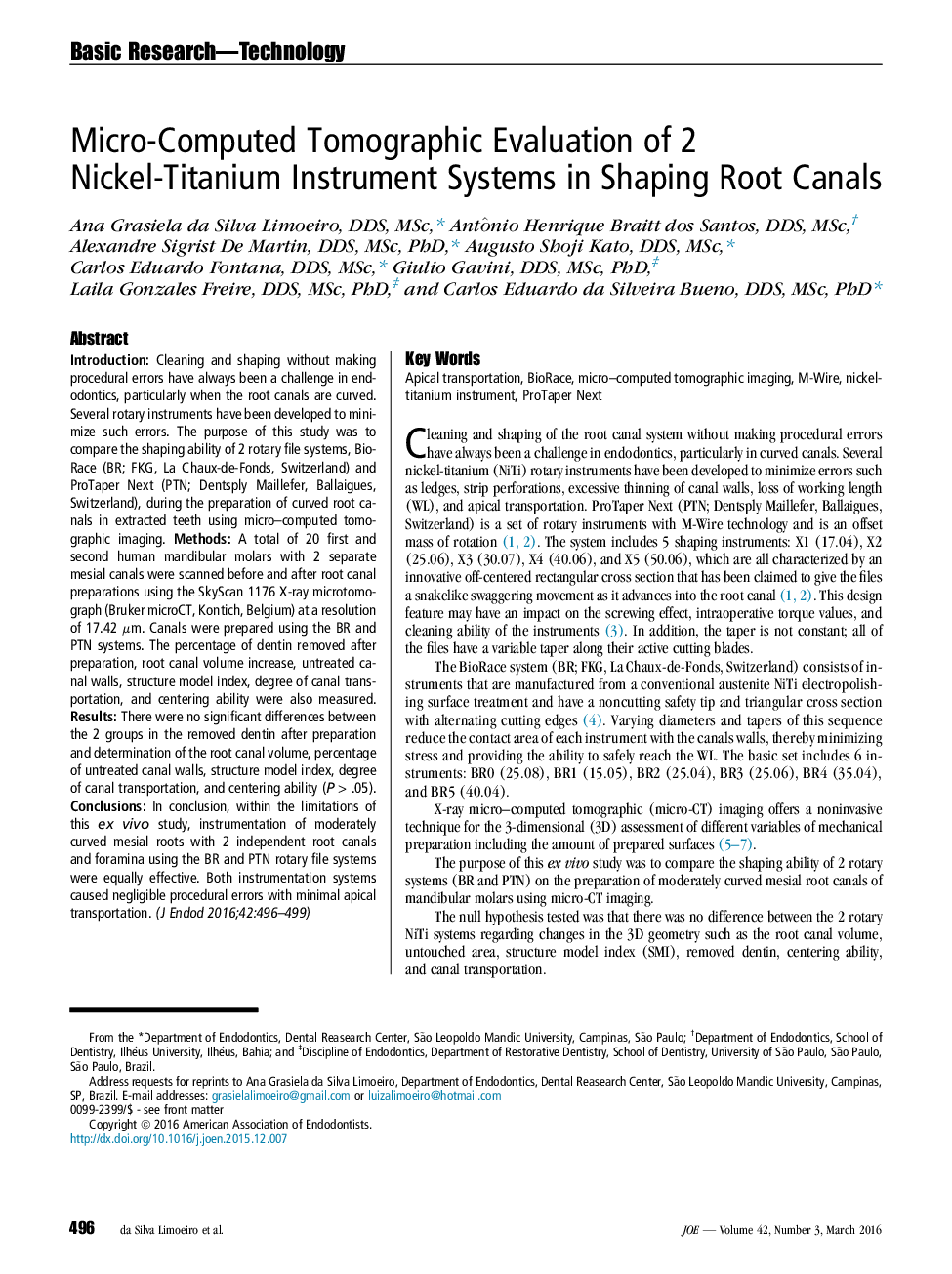| Article ID | Journal | Published Year | Pages | File Type |
|---|---|---|---|---|
| 3147942 | Journal of Endodontics | 2016 | 4 Pages |
•Analysis of the micro–computed tomographic scans revealed no procedural errors during root canal shaping.
IntroductionCleaning and shaping without making procedural errors have always been a challenge in endodontics, particularly when the root canals are curved. Several rotary instruments have been developed to minimize such errors. The purpose of this study was to compare the shaping ability of 2 rotary file systems, BioRace (BR; FKG, La Chaux-de-Fonds, Switzerland) and ProTaper Next (PTN; Dentsply Maillefer, Ballaigues, Switzerland), during the preparation of curved root canals in extracted teeth using micro–computed tomographic imaging.MethodsA total of 20 first and second human mandibular molars with 2 separate mesial canals were scanned before and after root canal preparations using the SkyScan 1176 X-ray microtomograph (Bruker microCT, Kontich, Belgium) at a resolution of 17.42 μm. Canals were prepared using the BR and PTN systems. The percentage of dentin removed after preparation, root canal volume increase, untreated canal walls, structure model index, degree of canal transportation, and centering ability were also measured.ResultsThere were no significant differences between the 2 groups in the removed dentin after preparation and determination of the root canal volume, percentage of untreated canal walls, structure model index, degree of canal transportation, and centering ability (P > .05).ConclusionsIn conclusion, within the limitations of this ex vivo study, instrumentation of moderately curved mesial roots with 2 independent root canals and foramina using the BR and PTN rotary file systems were equally effective. Both instrumentation systems caused negligible procedural errors with minimal apical transportation.
